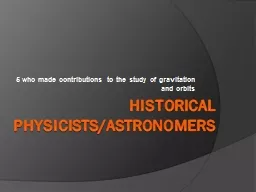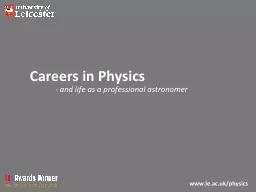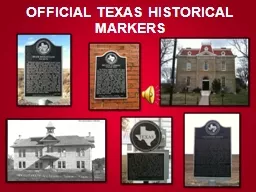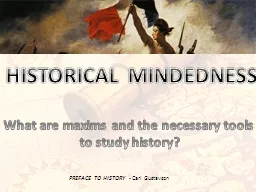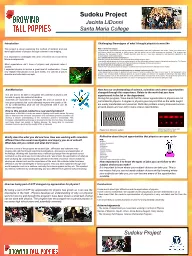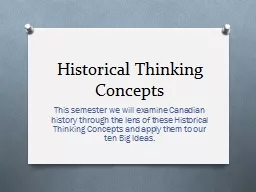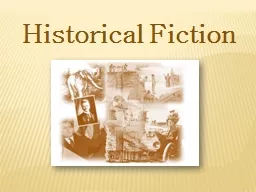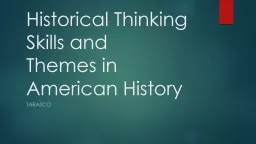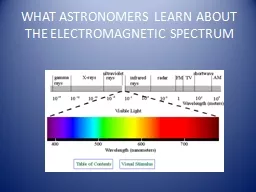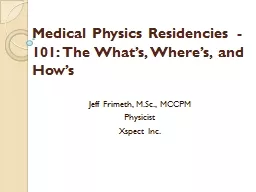PPT-Historical Physicists/Astronomers
Author : pasty-toler | Published Date : 2017-09-24
5 who made contributions to the study of gravitation and orbits Galileo Galilei David Arnold Griffin Stofer Meryl Seah Period 2 Short Biography Born in Pisa Italy
Presentation Embed Code
Download Presentation
Download Presentation The PPT/PDF document "Historical Physicists/Astronomers" is the property of its rightful owner. Permission is granted to download and print the materials on this website for personal, non-commercial use only, and to display it on your personal computer provided you do not modify the materials and that you retain all copyright notices contained in the materials. By downloading content from our website, you accept the terms of this agreement.
Historical Physicists/Astronomers: Transcript
5 who made contributions to the study of gravitation and orbits Galileo Galilei David Arnold Griffin Stofer Meryl Seah Period 2 Short Biography Born in Pisa Italy on February 15 1564 Family belonged to nobility but not rich. Working Group. Report to C 40. IAU General . Asssembly. August 6, 2015. Honolulu, HI. Ken Kellermann. NRAO. Outline. Goals of the HRA WG . 2012-2015 . Triennial Report. Deceased . radio astronomers. Conferences. . - and life as a professional astronomer. So you’re thinking of a career in physics?. Physics covers every length scale and every temporal scale in the Universe. Physics is everywhere!. And physicists are everywhere…. Marker History. Marker Types. Recorded Texas Historic Landmark (RTHL) Markers. *buildings and structures only*. Marker Types. Historic . Texas Cemetery . . (HTC) Markers. *. HTC. designation is a prerequisite*. What are maxims and the necessary tools . to study history. ?. PREFACE TO HISTORY - . Carl . Gustavson. . What is History?. As . we move through the present world, yesterday constantly surrounds us.. Jacinta . LiDonni. Santa Maria College. Introduction. This project is about examining the method of iteration and real world applications of physics through coherent x-ray imaging. . . It . is important to investigate this area of . This semester we will examine Canadian history through the lens of these Historical . T. hinking . C. oncepts and apply them to our ten Big Ideas.. Establish . historical significance. Use . primary source evidence. Laura Franklin-Hall. New York University. April 2015. Scientific Classifications. g. ranular materials. f. undamental particles. g. enes. e. ven-toed ungulates. Niger-Congo languages. Differences Between Classifications. Mills Kelly. George Mason University. tkelly7@gmu.edu. What Are We Going to Do Today?. Think about thinking like a historian. Watch some people think like a historian. Try to arrive at some partial agreement about what we think historical thinking is and how we can recognize it when we see it. What is Historical Fiction?. Historical fiction is fiction set in the past. It contains a rich mixture of fact and fiction. . . What is Historical Fiction?. Through novels and short stories, an author may combine factual information about time, place, events, and real people of the period with fictional characters, dialogue, and details.. Themes in American History. 2016-17. What does the AP Exam Look like? . Section . Questions Type . Number of Questions. Timing . Percentage. of Total Exam Score. 1. . A: Multiple Choice . 55 Questions . Historical fiction is . fiction. set in . the past. . It contains a rich. . mixture. of . fact. and . fiction. . . What is Historical Fiction?. Through novels and short stories, an author may . combine. History. : Politics, Dates, . Individuals. Culture: Social Customs and traditions. Geography: Topography, weather, flora, fauna.. This would include: Dress, food, homes, weddings, funerals, dance, mourning, tools, literature, war, etiquette, agriculture, employment, taxation, religion, holidays, economics, etc.. RADIO WAVES. HOW DO RADIO WAVES HELP ASTRONOMERS. Astronomers learn about a stars composition, structure and motion . MICROWAVES. HOW DO ASTRONOMERS USE MICROWAVES. ASTRONOMERS PICK UP THE COSMIC MICROWAVE BACKGROUND THAT WAS LEFT OVER FROM THE BIG BANG. : The What’s, Where’s, and . How’s. Jeff . Frimeth. , M.Sc., MCCPM. Physicist. Xspect. Inc.. Outline. Autobiographical Sketch. Medical Physics – the what and the why. Medical Physics Residency Programs.
Download Document
Here is the link to download the presentation.
"Historical Physicists/Astronomers"The content belongs to its owner. You may download and print it for personal use, without modification, and keep all copyright notices. By downloading, you agree to these terms.
Related Documents

